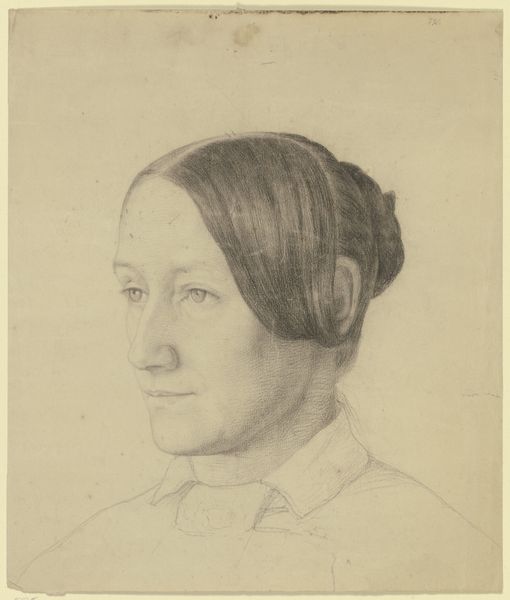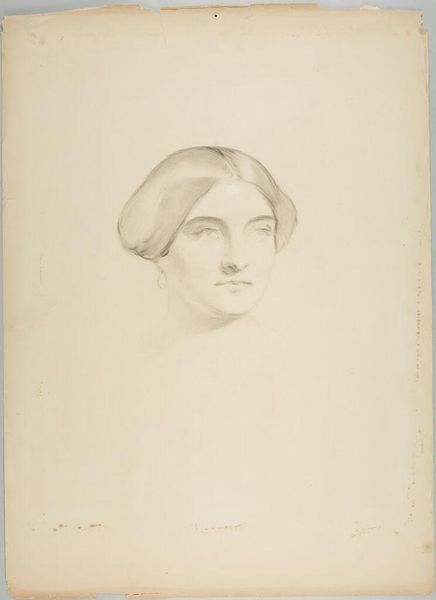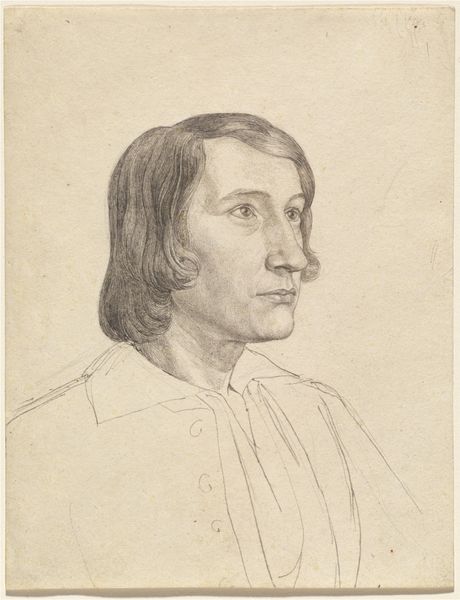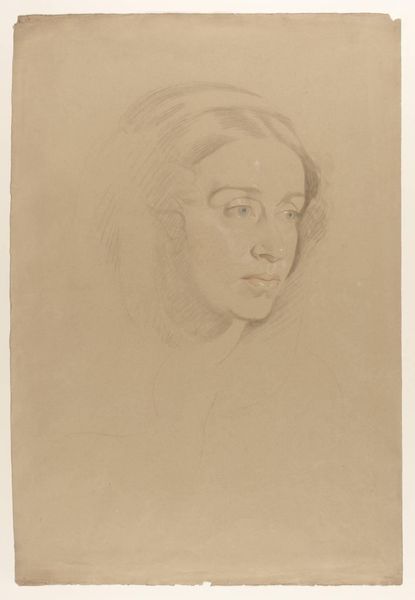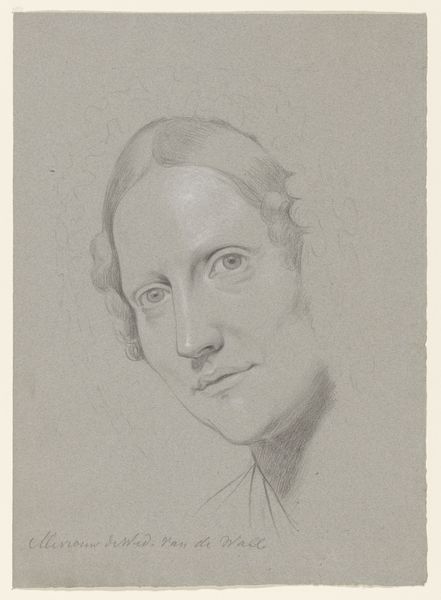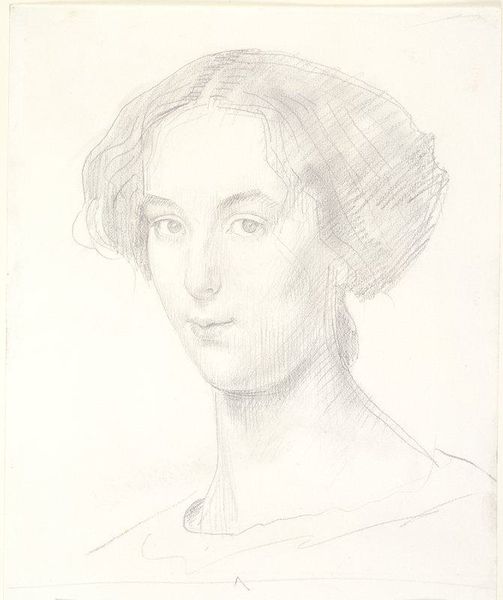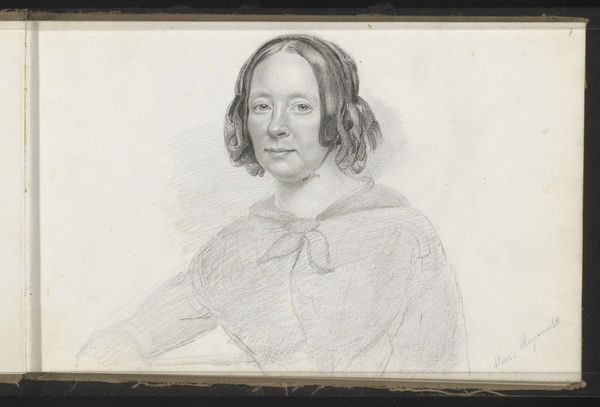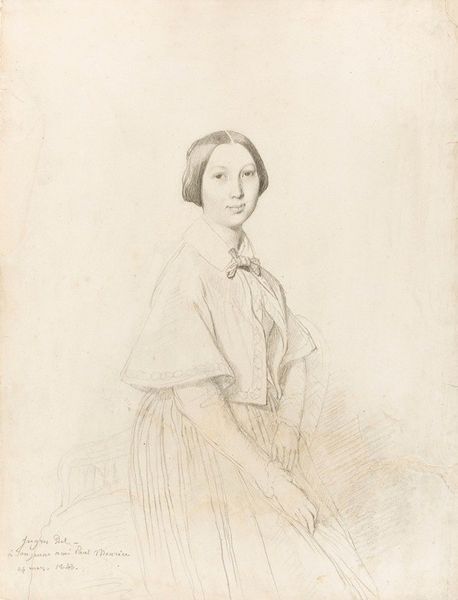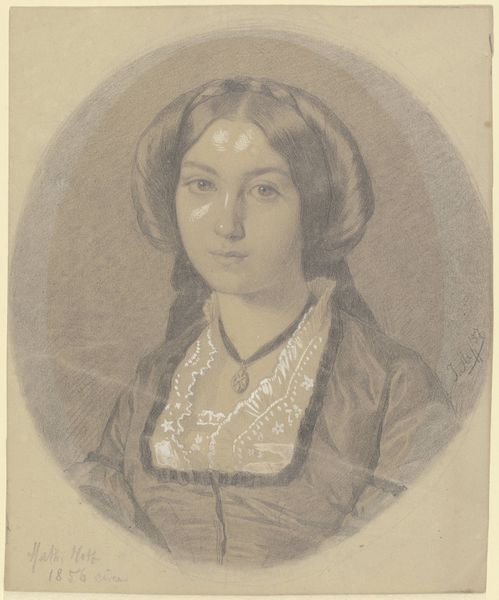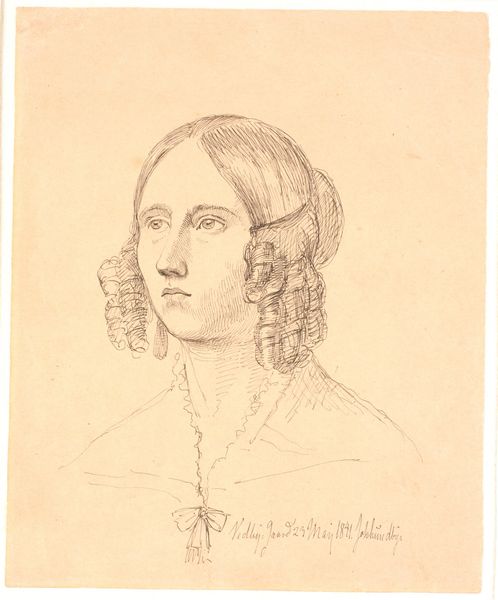
drawing, pencil
#
portrait
#
drawing
#
pencil drawing
#
romanticism
#
pencil
#
portrait drawing
#
realism
Dimensions: height 545 mm, width 378 mm
Copyright: Rijks Museum: Open Domain
Curator: Looking at this delicate drawing, I'm immediately struck by its quiet intensity. It has a restrained and rather melancholic beauty. Editor: Indeed. Here we have "Portret van Juf. Schade van Westeren," or "Portrait of Miss Schade van Westeren." The piece is attributed to Jan Adam Kruseman and, although undated, its creation is placed between 1814 and 1862. The work is in pencil. Curator: The sitter’s expression is captivating, there's a gentle, almost vulnerable quality, wouldn't you say? Her eyes seem to hold a depth of unspoken emotion, amplified by the soft pencil strokes, and how lightly shaded this all is. Editor: Absolutely. The slight smile could be interpreted as an emblem of Romanticism, an inner life yearning for expression. Pencil as a medium, often associated with sketches, adds an intimacy to this portrayal. We're given a sense of directness. Also, do you notice the hairstyle? The smooth coif conveys respectability and the prevailing norms of feminine appearance during that era. Curator: Yes, and think about portraiture’s function during the 19th century: before the rise of widespread photography, commissioned portraits preserved status and identity. What's fascinating is that Kruseman hasn't just created a likeness but seemingly an exploration of character and social positioning of women during his time. It prompts questions about the subject's role, her possible aspirations, the subtle confines of her social world, and what these portraits communicated about women of her era. Editor: The use of line, particularly, draws me. Notice how the outlines of her shoulders fade, suggesting an unfinished quality that, strangely, adds to its emotional resonance. The iconography suggests a woman on the cusp of change, yet carefully anchored to tradition. Curator: Examining “Portret van Juf. Schade van Westeren" it makes you think about who commissions art, what were the expectations when displaying such works, and what impact, however muted, this made in social dialogue. Editor: Indeed. And perhaps now, having paused to consider it, visitors might sense not only a glimpse into the past, but echoes of emotional experiences that continue to resonate across time.
Comments
No comments
Be the first to comment and join the conversation on the ultimate creative platform.

